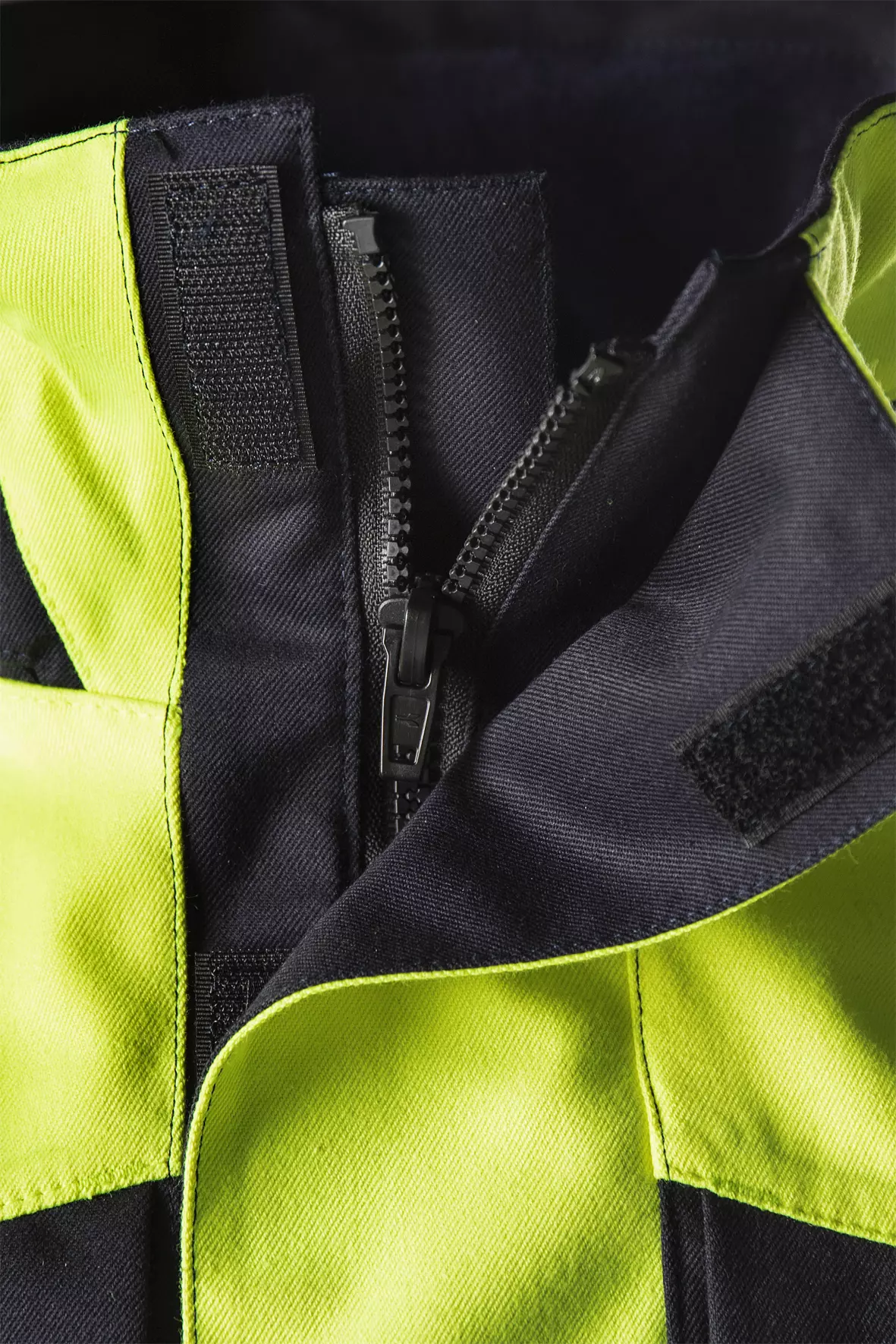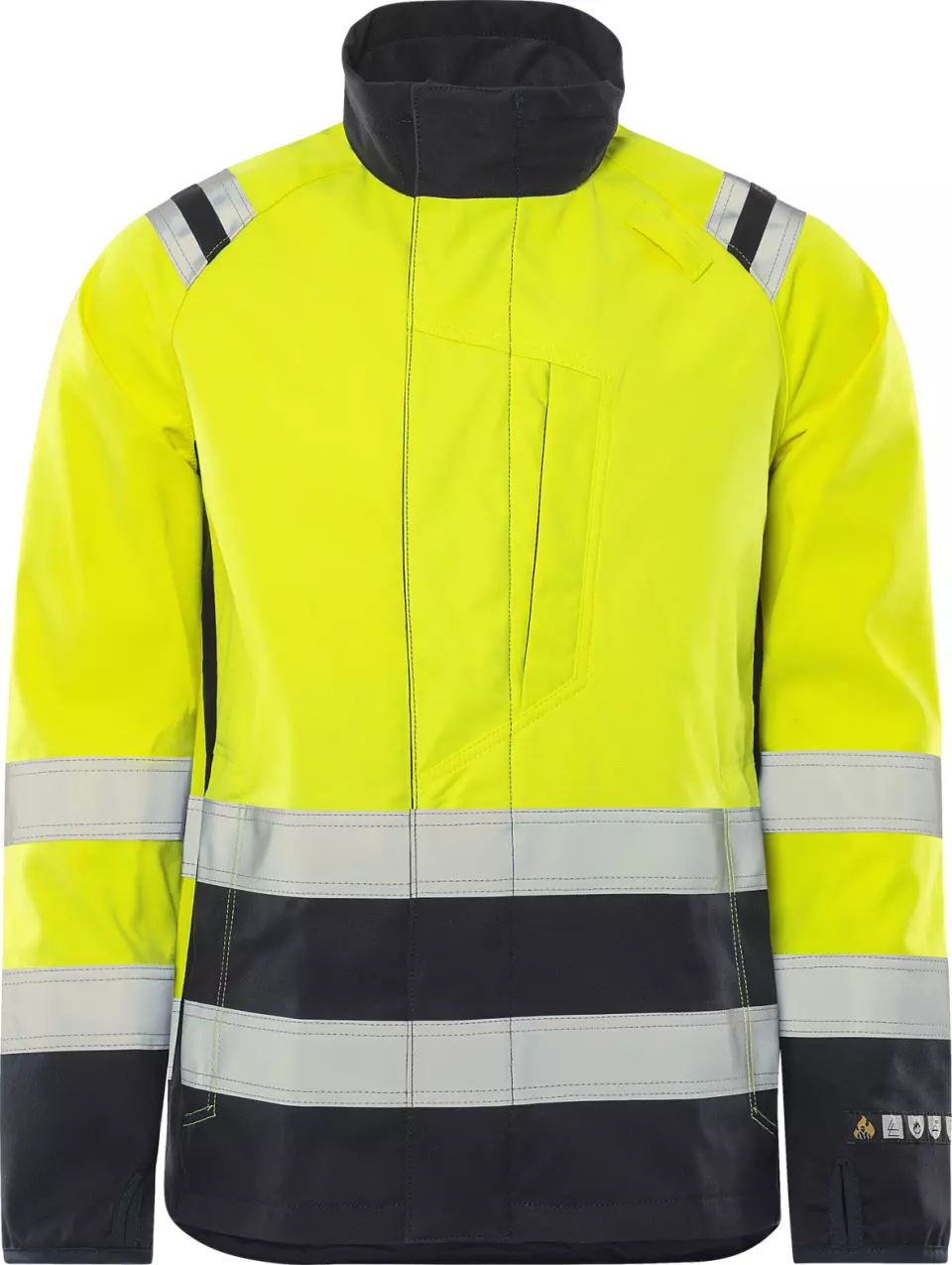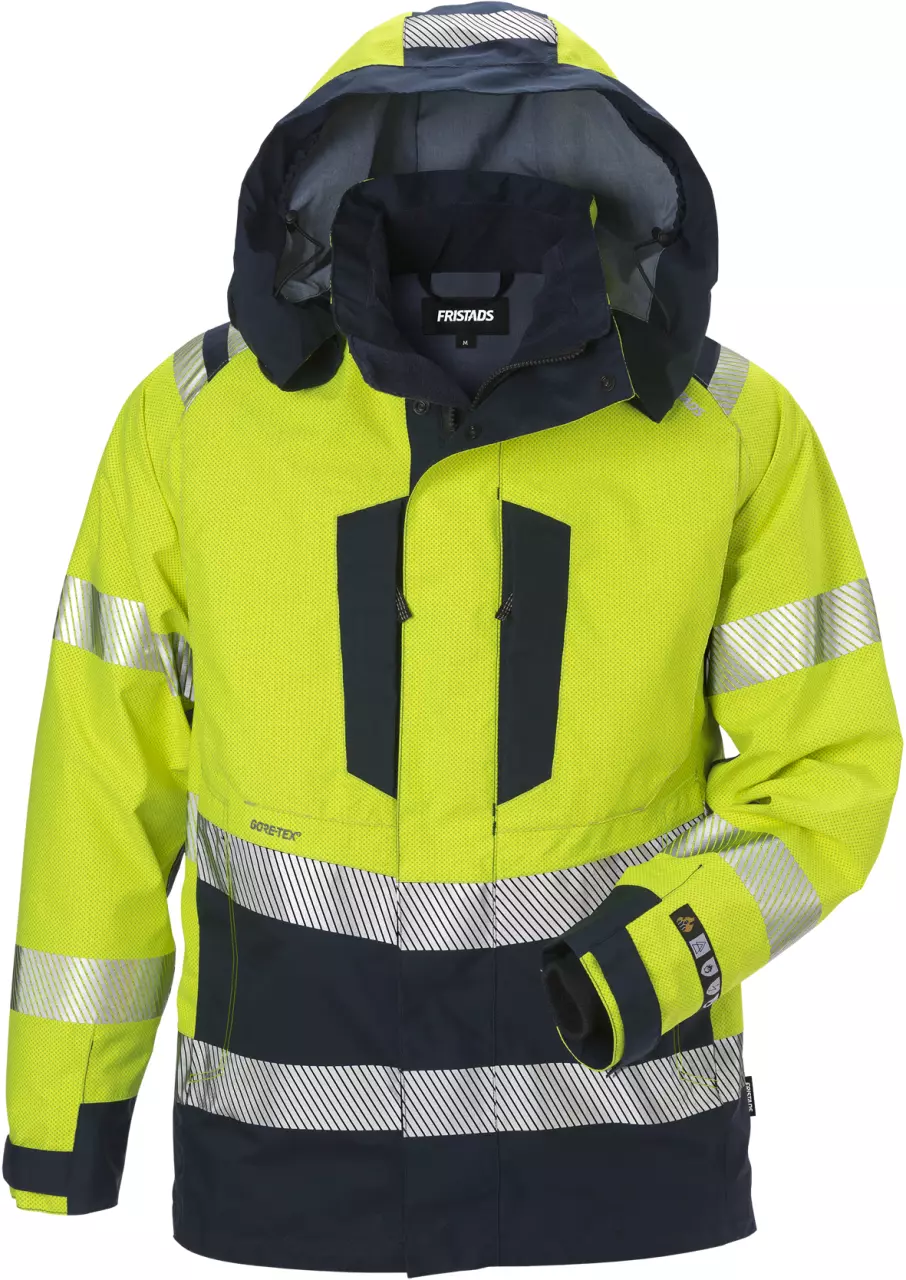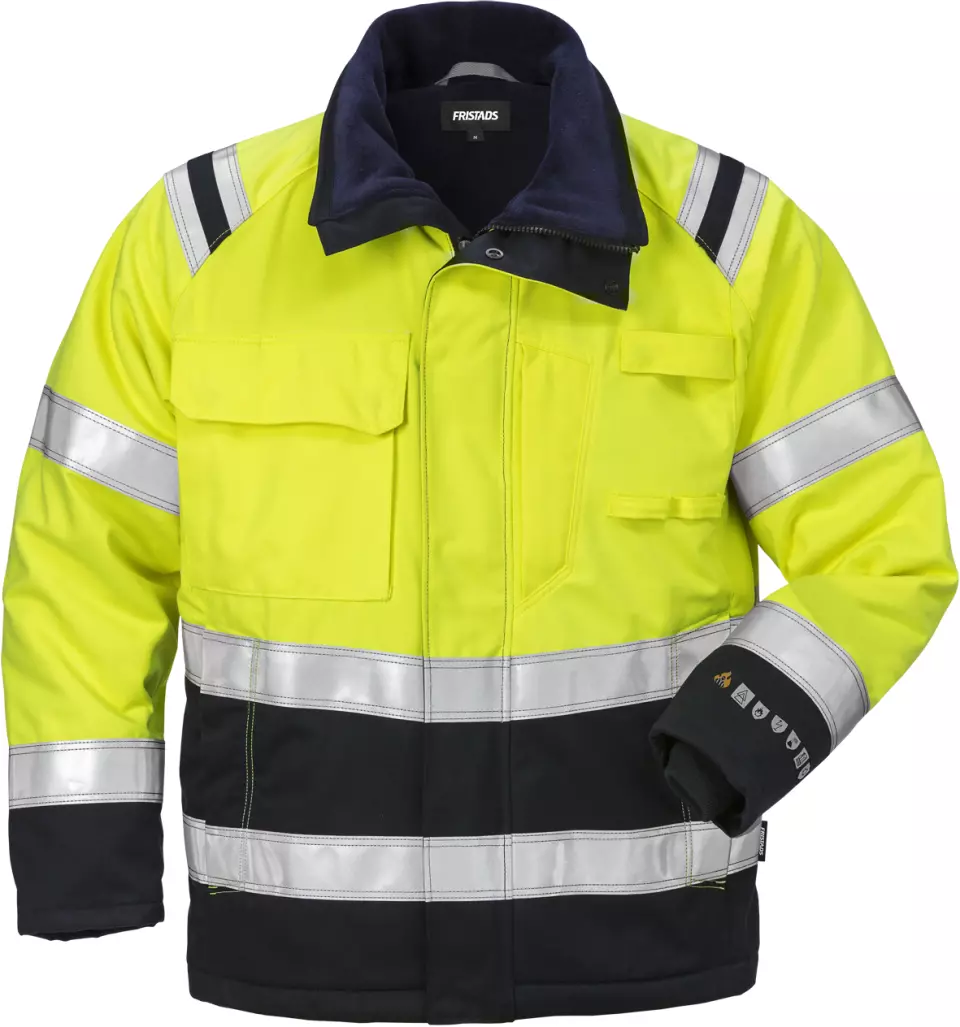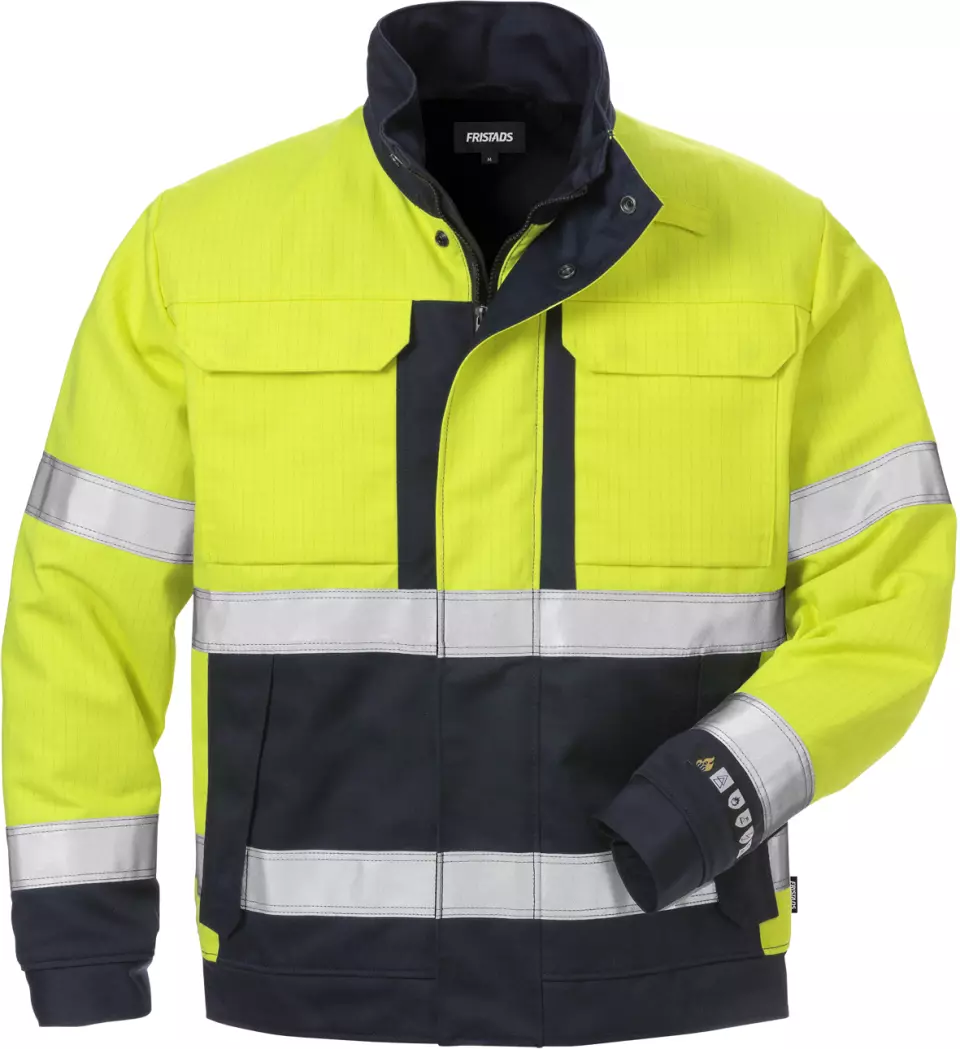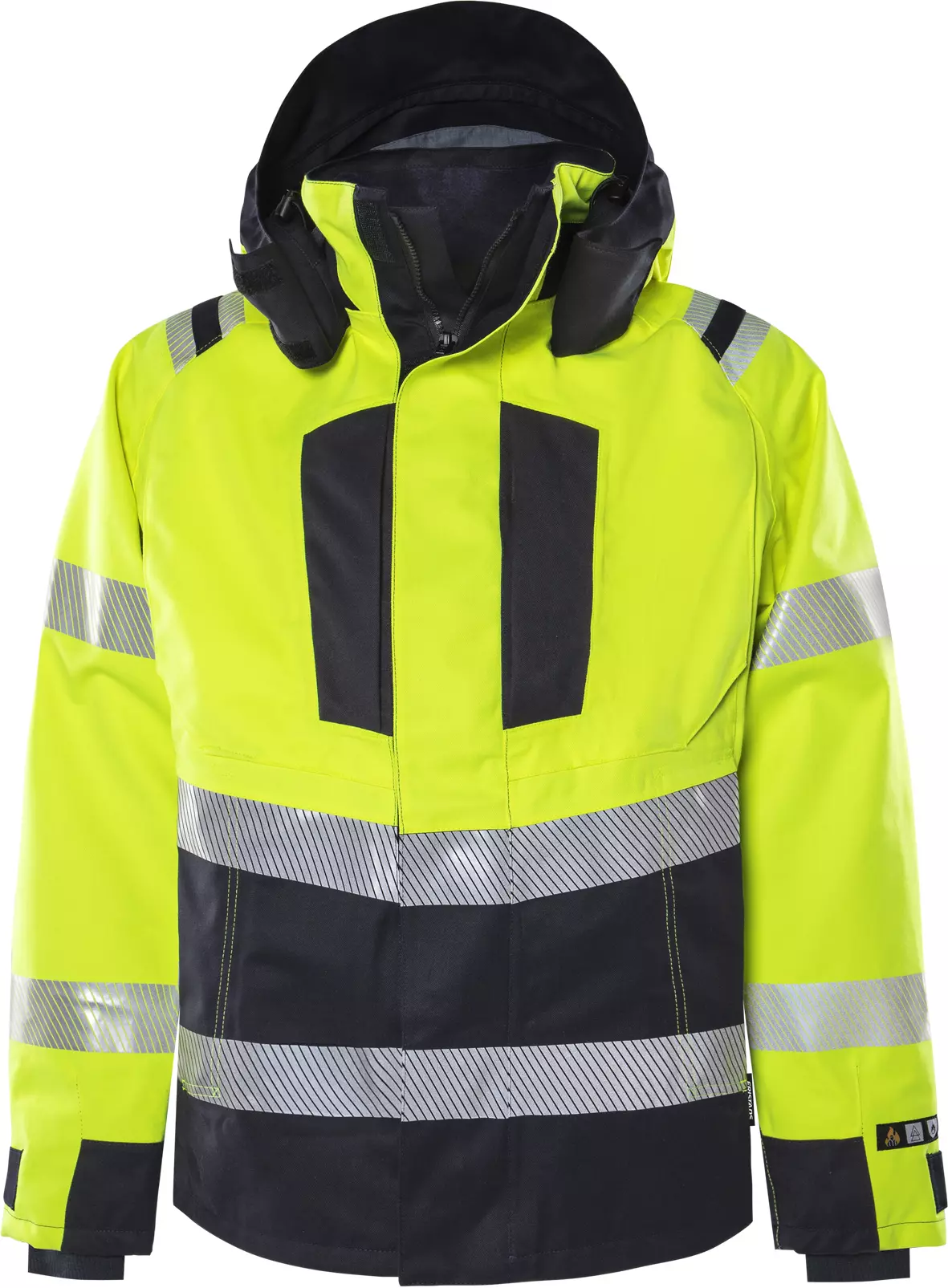
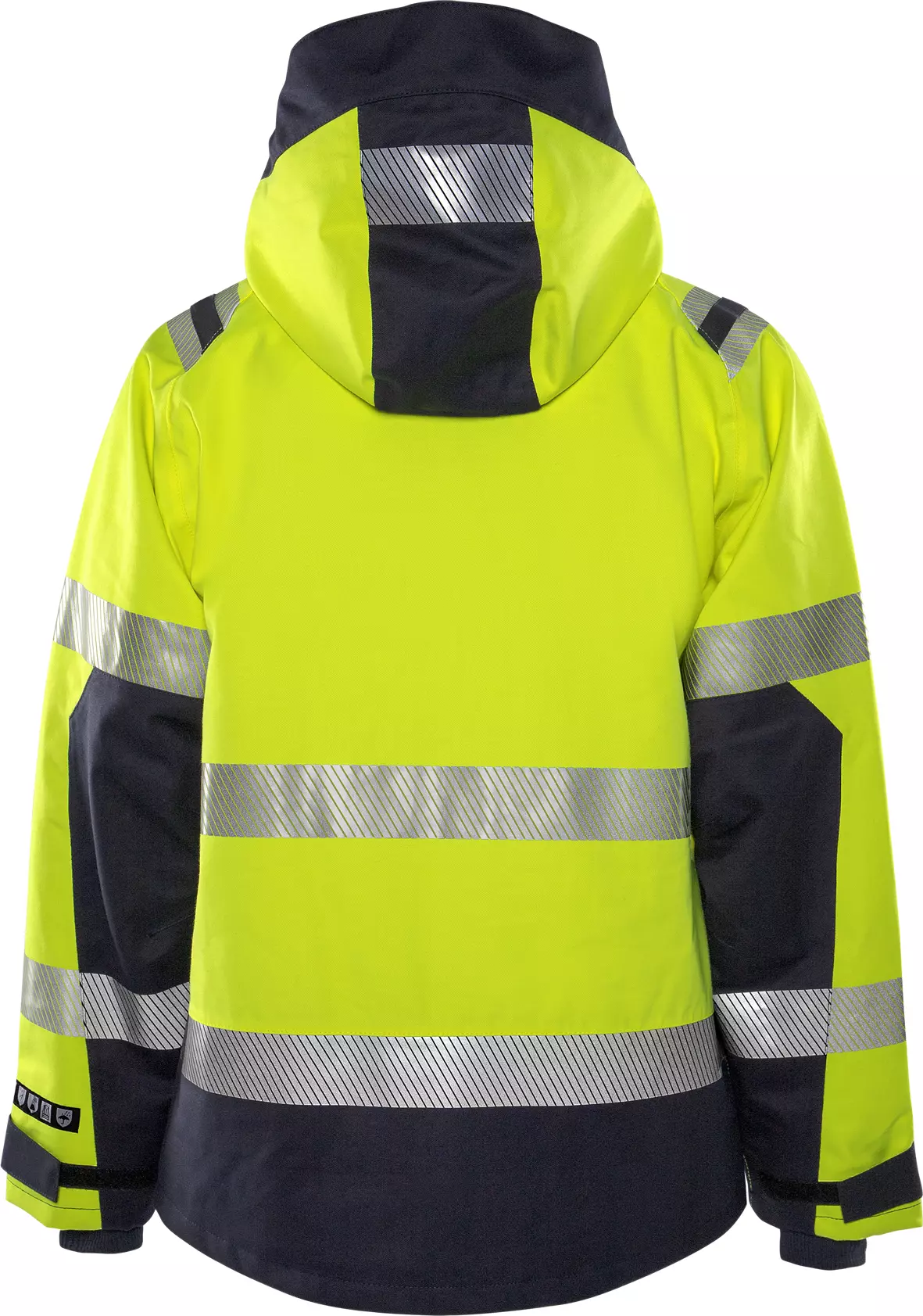
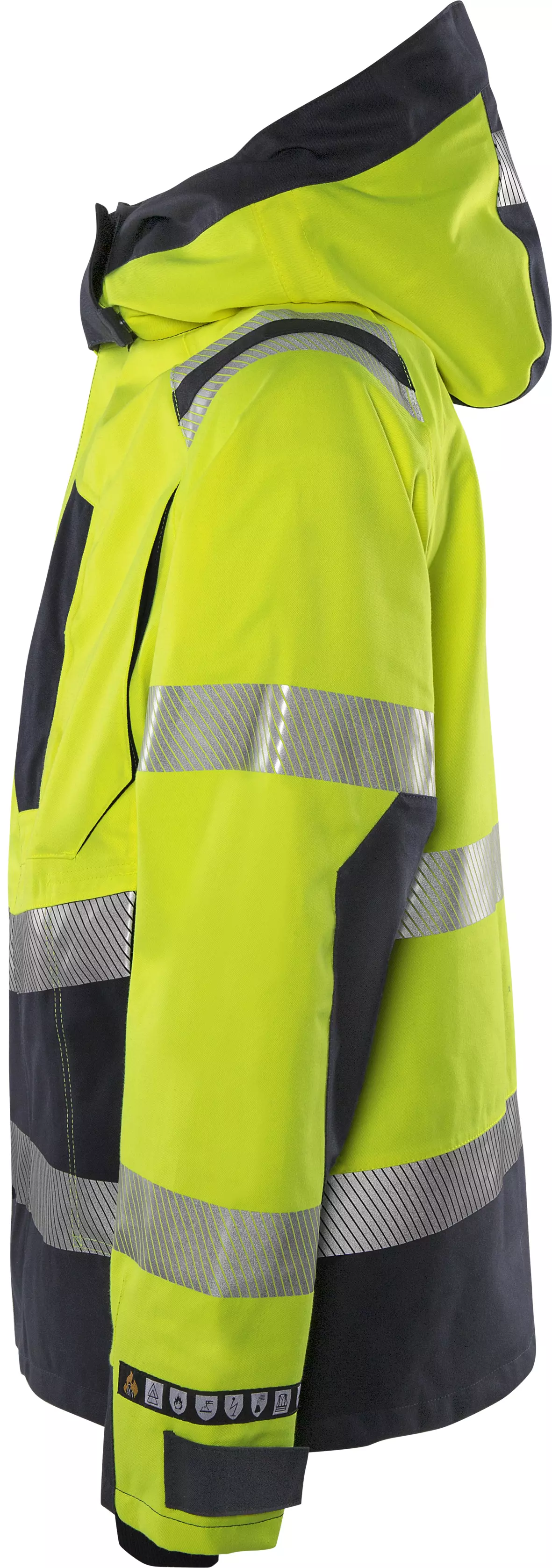
Features You'll Love
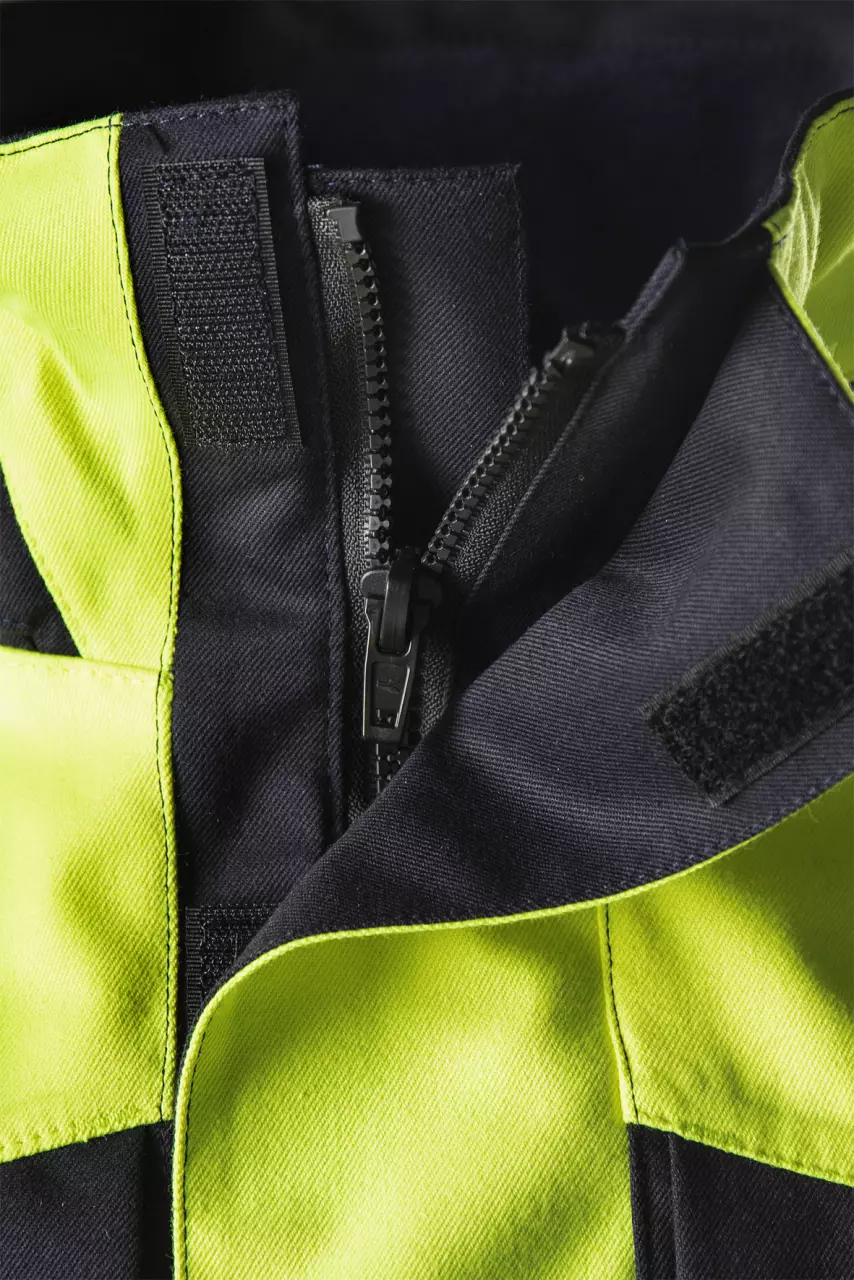
Closure Style · Zipper
The method used to fasten the jacket or vest, affecting ease of use, security, and weather protection during work activities.
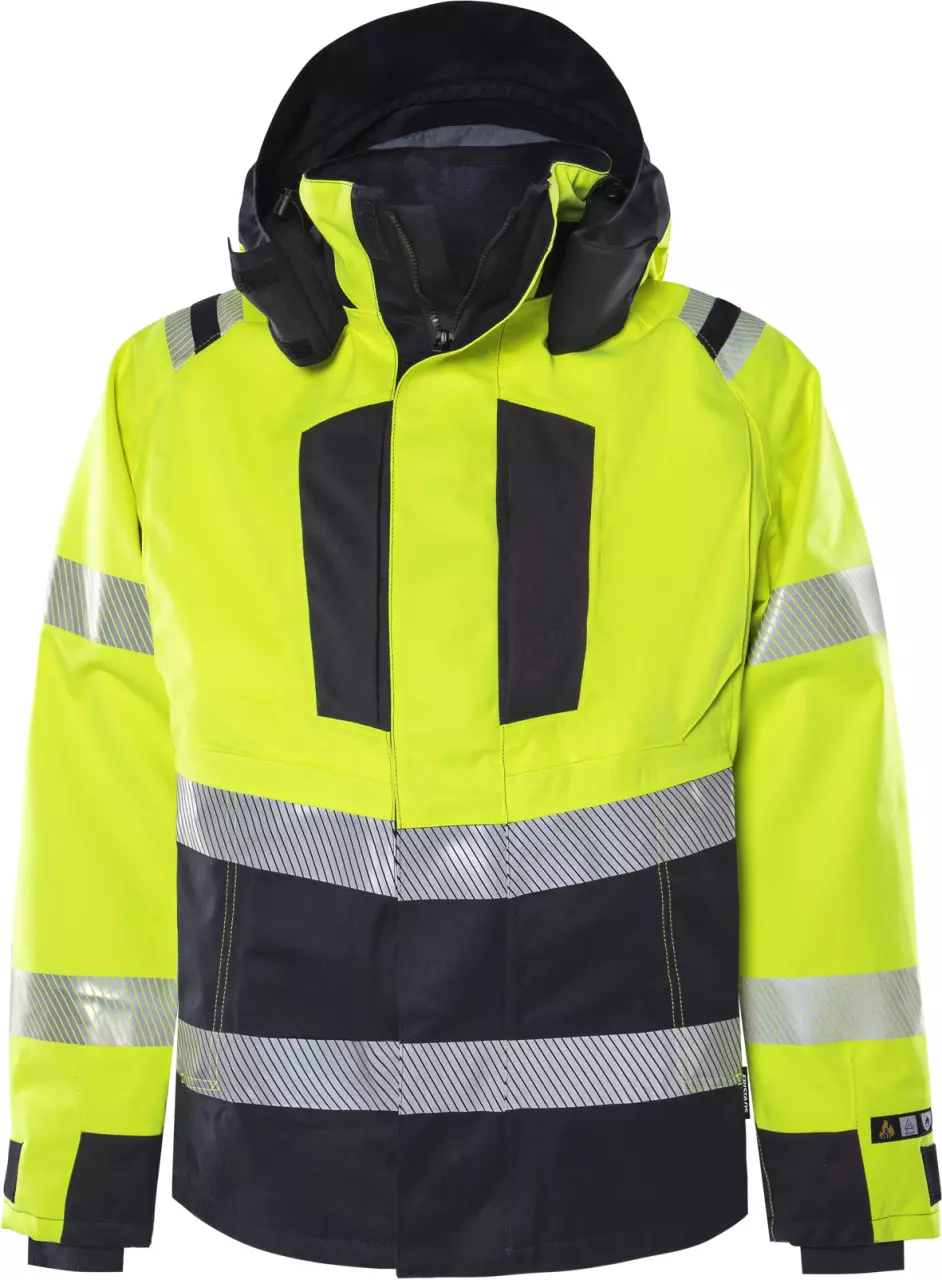
Material · Modacryl, Aramid, Cotton, Viscose

Jacket Type · Hooded
An integrated hood provides essential head protection from the elements, keeping you dry and focused on the job.

EN 343 · Breathability Class 4, Waterproofness Class 3
EN ISO 20471 · Reflective Strip Area Grade 2, Reflective Strip Area Grade 3
This garment offers the highest level of breathability, ensuring maximum comfort during strenuous activity. It allows sweat to escape effectively, keeping you dry from the inside while protecting you from rain, snow, and other wet weather.
Provides the highest level of protection against rain, snow, and fog for extended periods. This garment is ideal for working in heavy rain and other harsh weather conditions, keeping you dry and comfortable.
Provides an intermediate level of visibility for use in moderate-risk environments. This makes you more visible day and night to traffic moving at speeds up to 60 km/h, ideal for road work or delivery drivers.
Provides the highest level of visibility in high-risk environments with poor light or bad weather. Garments have a large area of fluorescent material and reflective tape that covers the torso and has full-length sleeves or trousers.
Fristads
Flamestat Airtech Jacket 4525 ATHR
Flamestat Airtech Jacket 4525 ATHR
4.8 / 5
476,12 €
Choose size
Out of stock
Free delivery
Features You'll Love

Closure Style · Zipper
The method used to fasten the jacket or vest, affecting ease of use, security, and weather protection during work activities.

Material · Modacryl, Aramid, Cotton, Viscose

Jacket Type · Hooded
An integrated hood provides essential head protection from the elements, keeping you dry and focused on the job.

EN 343 · Breathability Class 4, Waterproofness Class 3
EN ISO 20471 · Reflective Strip Area Grade 2, Reflective Strip Area Grade 3
This garment offers the highest level of breathability, ensuring maximum comfort during strenuous activity. It allows sweat to escape effectively, keeping you dry from the inside while protecting you from rain, snow, and other wet weather.
Provides the highest level of protection against rain, snow, and fog for extended periods. This garment is ideal for working in heavy rain and other harsh weather conditions, keeping you dry and comfortable.
Provides an intermediate level of visibility for use in moderate-risk environments. This makes you more visible day and night to traffic moving at speeds up to 60 km/h, ideal for road work or delivery drivers.
Provides the highest level of visibility in high-risk environments with poor light or bad weather. Garments have a large area of fluorescent material and reflective tape that covers the torso and has full-length sleeves or trousers.
Product description
This waterproof, windproof and breathable Class 3 high-visibility jacket provides comprehensive protection for demanding work environments. With its dirt-, oil- and water-repellent surface and a water column of 10,000 mm, it ensures reliable protection in adverse weather conditions. The jacket meets multiple safety standards including protection against electric arcs and is approved after 25 washes.
Product Features:
- Removable and adjustable hood
- Front pocket opening with two-way zipper up to collar and concealed hook and loop fastener
- 2 chest pockets with concealed zipper, one with D-ring inside
- Card pocket with zipper and phone pocket inside, accessible from outside
- 2 inner pockets, one with zipper
Technical Details:
- Waterproof, windproof and breathable
- Dirt-, oil- and water-repellent
- Water column 10,000 mm
- Breathability RET 14.44
- Outer material 260 g/m², lining 130 g/m²
Standards:
- EN 61482-1-2 APC 2
- EN 61482-1-1 ELIM: 27 cal/cm²
- EN ISO 11612 A1 A2 B1 C1 F1
- EN ISO 11611 A1 A2 Class 1
- EN 1149-5
- EN 13034 Type PB [6]
- EN ISO 20471 Class 2 in sizes XS-S and Class 3 in M-4XL
- EN 343 Class 3/4
- OEKO-TEX® certified
